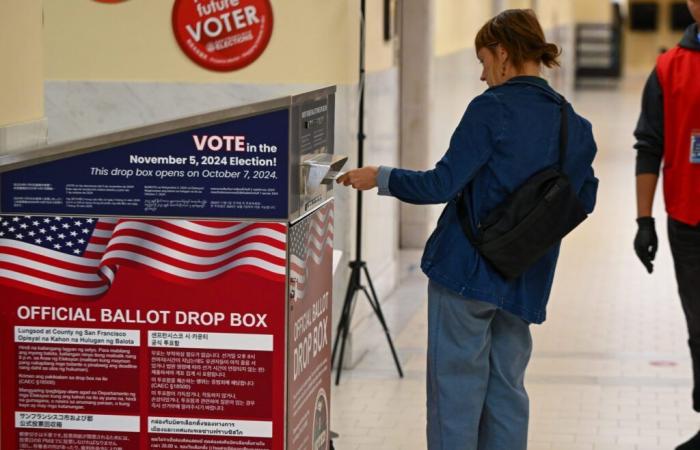Generation Z voters who struggle with handwriting could slow vote counting, Nevada’s secretary of state said.
He attributed the higher number of problematic postal votes to young voters without the correct signature.
Many schools stopped teaching handwriting in 2010, resulting in a generation unfamiliar with the style.
As a result of a decades-long decline in handwriting instruction, young people in the U.S. are increasingly lacking a clear signature – a deficiency that could hinder Generation Z voters from casting their ballots.
Nevada Secretary of State Francisco Aguilar warned Tuesday morning that a relatively high number of absentee ballots had already been rejected in Clark and Washoe Counties, two of the battleground state’s most populous counties, due to signature matching issues.
“That’s largely because young people don’t have signatures these days,” Aguilar told the New York Times. “And if they registered under automatic voter registration, they signed a digital pad at the registration office and that became their signature on the driver’s license.”
U.S. states require a voter’s signature on absentee and absentee ballots, and some states require additional verifications, including a comparison of that signature to the voter’s signature on file. According to the National Conference of State Legislatures, about two-thirds of states have a process for notifying voters that their ballots were not counted and giving them an opportunity to correct the error. This may take several days and lengthen the vote counting process.
In states that do not have a corrections process, ballots without verifiable signatures will not be counted.
On the eve of Election Day, more than 11,300 absentee ballots needed to be verified in Clark County and more than 1,800 signatures in Washoe County, according to the Nevada Secretary of State’s Office. As the state continues to process absentee ballots this week, those numbers — already higher than in 2020 and 2022 — are expected to rise.
“When you look at the data and realize how high it is, you get nervous because these races are so close, the margins are so small that I don’t want to look at the numbers tonight and know that we’re going to the count the ballot will have to wait,” Aguilar told the Times on Tuesday.
In another press release, Aguilar said the need to correct signatures extends beyond youth to include “older voters who provide varying signatures throughout their lives, voters who recently married but have not updated their name on voter registration, and yes, young people who have not yet developed a firm signature”.
Discrepancies in ballot papers didn’t just occur in Tuesday’s election. As NPR reported at the time, hundreds of thousands of mail-in votes, or about one percent, were rejected nationwide in the 2022 midterm elections. But as mail-in voting becomes more common and younger voters struggle with the style, the problem is likely to persist.
Debra Cleaver, founder of Vote America and Vote.Org, has long been an advocate for eliminating signature matching and replacing it with a verifiable and unique identifier, such as. B. an ID card or a combination of birthday and part of the social security number.
“The fundamental problem is that a signature is not a unique identifier,” Cleaver said, and the second problem is that handwriting is no longer taught in schools.
Since 2010, many states have eliminated handwriting from their curricula as part of the widespread shift to the Common Core State Standards for English, which do not specifically require the instruction of cursive.
As a result, many people now in their late teens and early 20s have had little to no cursive instruction and therefore little opportunity to develop their own handwriting.
“It can’t be that all the people who don’t have a signature don’t have problems,” said Cleaver, “that’s going to become a bigger and bigger problem.”
However, in recent years, several states, including California and Louisiana, have passed laws to bring this skill back into classrooms.
External content not available
Do you have a contentpass subscription but still don’t want to miss out on displaying external content from third-party providers? Then click on “agree” and we will integrate external content and services from selected third-party providers into our offer to improve your user experience. You can view a current list of these third parties at any time in Privacy (Link to Privacy). In this context, usage profiles (including based on cookie IDs) can also be created and enriched, even outside the EEA. In this case, your consent also includes the transfer of certain personal data to third countries, including the USA in accordance with Article 49 Paragraph 1 Letter a) GDPR. Further details on data processing can be found in our data protection information and privacy policy, which are available at any time in the footer of our offer. You can exercise your consent to the integration of external content at any time in the footer of our offer via the “Revocation tracking” link.
Agree and view external content






